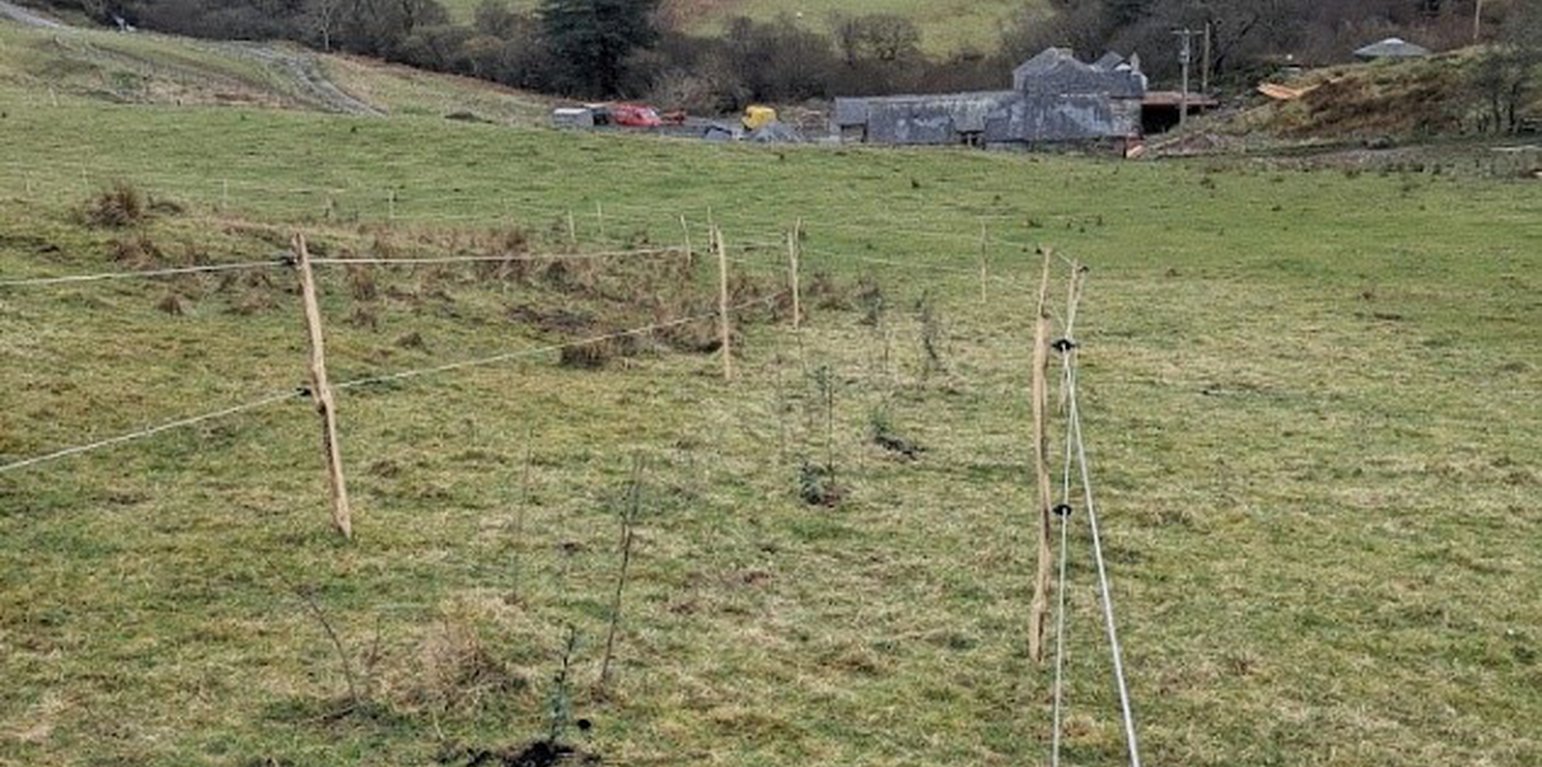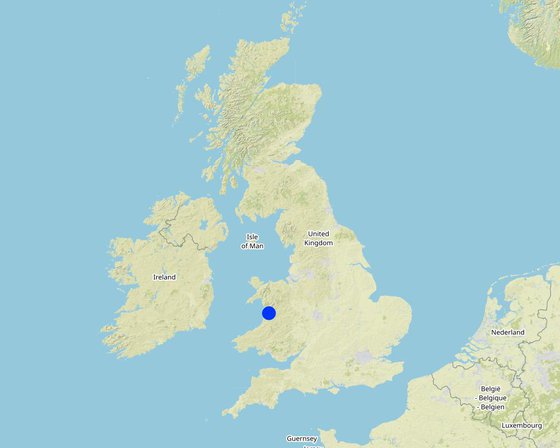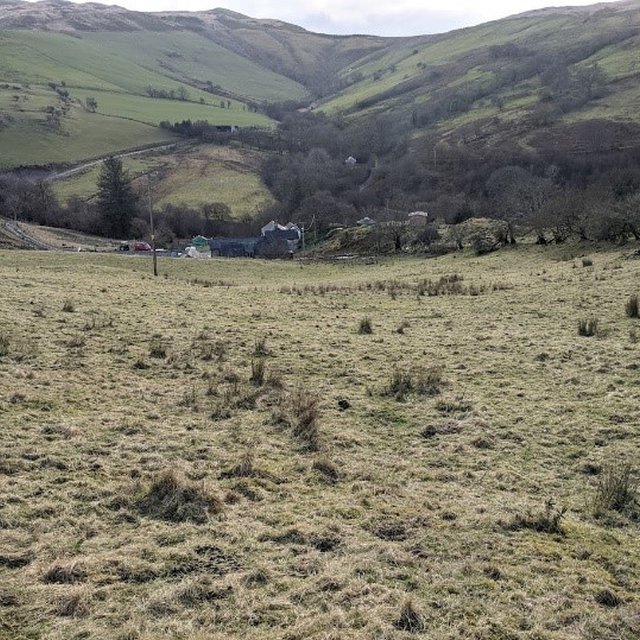



A first generation farmer with a mixed 36 hectare farm has been exploring the establishment of a regenerative silvopastoral agroforestry system.
Under this system the farm has been divided into four zones:
1. Cae mawr- 4.3 ha field. Formerly semi-improved permanent pasture with occasional scattered trees. The field has been divided with hedges into 8 rotational grazing units for Highland and Welsh White cattle. Hedges are of mixed edible fruit and nut varieties. The more distant hedges are composed of mixed native species.
2. Cae Ceirch – 5.4 ha field. Semi-improved permanent pasture with scattered trees and gorse bush. New planting of native species amongst the gorse, creating enclosures by planting native trees at a variety of densities. Electric fences have installed for protection and will be removed once the trees are large enough to withstand browsing. Additionally, field trees are being planted and protected with "cactus tree guards" (tubular sleeves of wire mesh with outer spikes).
3. Lower slopes - 3 ha area. Old pasture which has been grazed exceptionally lightly for a number of years. Allowing native trees, mostly birch, willow and hazel to naturally regenerate. Bracken and bramble have been controlled by pigs with the aim of rehabilitating towards a silvopastoral system. Some thinning of trees will be undertaken in places to achieve that end.
4. Riparian woodland - 1 ha area. Occasionally grazed by cattle on an "as needed" (ad hoc) basis.
The system aims to produce high quality nutrient-dense food, with the highest animal welfare, whilst simultaneously providing maximum biodiversity benefits.
New tree planting is protected by electric fencing comprising chestnut posts with ring insulators and poly wire, with cactus tree guards for individual trees.
The benefits include shelter and shade for animals, with increased diversity of forage. In time there will be a harvest of edible products for human consumption (fruits and nuts etc). And the system provides a variety of biodiversity benefits as well as a visual - aesthetic - improvement to the landscape.

Location: Machynlleth, Wales, United Kingdom
No. of Technology sites analysed: single site
Spread of the Technology: applied at specific points/ concentrated on a small area
In a permanently protected area?: No
Date of implementation: 2018
Type of introduction

| Species | Count |
| cattle - non-dairy beef | 15 |
| swine | 5 |





| Specify input | Unit | Quantity | Costs per Unit (£GBP) | Total costs per input (£GBP) | % of costs borne by land users |
| Labour | |||||
| Checking trees & electric fences | Hours | 24.0 | 10.0 | 240.0 | 100.0 |
| Vegetation maintance | Hours | 30.0 | 10.0 | 300.0 | 100.0 |
| Management of rotational grazing pastures | Hours | 100.0 | 10.0 | 1000.0 | 100.0 |
| Equipment | |||||
| Flail mower attachment to tractor / strimmer | unit | 1.0 | 100.0 | ||
| Total costs for maintenance of the Technology | 1'540.0 | ||||
| Total costs for maintenance of the Technology in USD | 1'811.76 | ||||
Increased diversity with new tree forage available
Improved welfare for cattle as trees provide shelter.
Increased forest areas, diversity and connectivity
Trees provide wood fuel, fruit and nuts, alongside possible future option for recreation and tourism opportunities
Trees provide wood fuel, fruit and nuts, alongside possible future option for recreation and tourism opportunities
Time for installation and management is higher than previous
More trees in the fields and flowering hedgerows etc
Trees as stores of carbon and improved soil health
Addition of above ground biomass in trees and hedgerows
More diversity of productive and native trees and hedges
More space for biodiversity